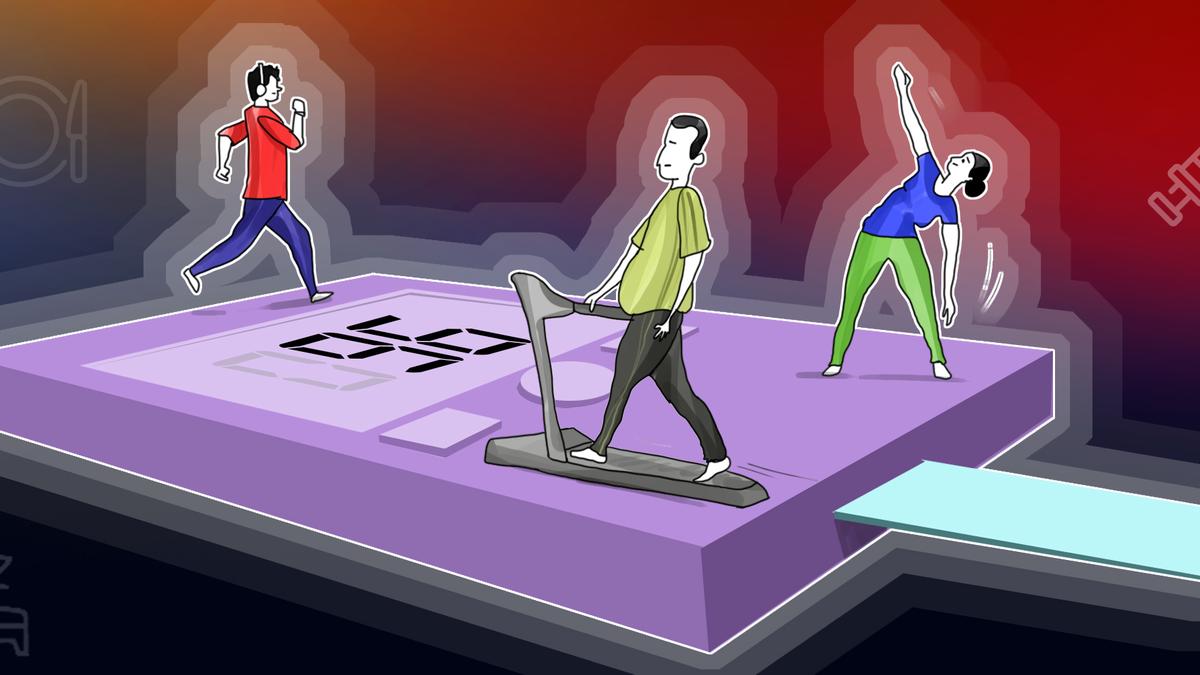Once Type 2 diabetes sets in, it is still possible to reverse it in some individuals.
| Photo Credit: SREEJITH R. KUMAR
Till the 1970s, diabetes was a relatively rare condition in India. An Indian Council of Medical Research study published in 1972 showed that 2% of Indians in cities and 1% in rural areas had diabetes. Two significant events in India’s history that improved the economy and living standards paradoxically propelled the obesity and Type 2 diabetes epidemic in India.
Till the 1960s, India was dependent on food from abroad through schemes such as PL 480 of the U.S. After the Green Revolution, India became self-sufficient in food. Second, in 1991, when the economy opened up, foreign investments poured in and the economy accelerated. But with the rising income levels, consumption of high-calorie foods rich in carbohydrates, sugar, fat and salt, but deficient in protein and fibre, coupled with physical inactivity, became the norm. Obesity rates and prevalence of Type 2 diabetes soared. Today in the major cities in India, over 25% of adults above 20 years of age and almost half of all adults by the age of 50 have Type 2 diabetes. Rural areas are not far behind.
To mark World Diabetes Day, which is celebrated on November 14, let us strive to have a “Diabetes Complications Free India”. This is possible, if we all work together.
Excess fat
So what fuelled the diabetes epidemic? There is evidence that excess fat deposition inside the abdomen, especially in the liver, is linked to diabetes. Our studies at the Madras Diabetes Research Foundation (MDRF) showed that excess calories in the form of refined carbohydrates such as white rice or refined wheat is a major driver of the epidemic. The excess carbohydrate gets converted into fat, which then gets stored in the intra-abdominal compartment and soon the liver gets filled up with fat, leading to insulin resistance. Fat accumulates in the pancreas, leading to decreased insulin secretion.
Meanwhile, newer aetiological factors have also begun to emerge. A CARRS Study carried out in New Delhi and Chennai showed that air pollution is an important cause of Type 2 diabetes. Air pollution acts as an endocrine disruptor, affecting both the pancreas and the liver, leading to diabetes.
Are there unique genetic factors which makes us more predisposed to diabetes?
There is new evidence that genes which are responsible for insulin deficiency are more prominent in Indians than in White Europeans. Epigenetic factors may also contribute. During pregnancy, malnutrition, with deficiency of vitamin B12 and perhaps excess of folate in the blood, may trigger intrauterine programming of the foetus to develop diabetes in the future. Studies done in Pune have shown that even at the time of birth, babies born in India, though much smaller in size, have more fat. This is referred to as the “thin fat Indian” paradox. Recent studies from the U.K. have thrown new light on why South Asians accumulate more intra-abdominal fat.
When South Asians and Europeans were overfed as part of an experimental study, Europeans gained both fat and muscle. On the other hand, South Asians mostly gained fat. South Asians have reduced small adipocytes in comparison with those of Europeans. When excess food was consumed, Europeans increased their fat deposits in the abdominal wall rather than inside the abdomen. In South Asians, due to the deficiency of the small adipocytes, these superficial fat cells get filled up very quickly and thus “overflow” of the fat occurs, which enters inside the abdomen and then on to the liver. This explains why Indians have such high rates of Type 2 diabetes.
What can be done to prevent the diabetes epidemic in India?
We have to obviously start early. Even before marriage, women should shed excess weight, exercise regularly and thereby reduce the risk of gestational diabetes (diabetes during pregnancy). During pregnancy, a nutritious diet with enough protein and fibre, less carbohydrate and providing sufficient vitamin B12 can reduce the risk of the child becoming programmed to develop diabetes. Next, from a young age, children should be taught to be physically active and eat healthy diets. This can help prevent childhood obesity which usually tracks into adulthood. Other factors such as increasing physical activity, ensuring adequate sleep and preventing air pollution can slow down the epidemic.
Once Type 2 diabetes sets in, it is still possible to reverse it in some individuals. Indeed, if it is identified at the stage of pre-diabetes, remission becomes even more feasible. Even in those for whom remission is difficult, good control of the ABCD factors — A1c, blood pressure and cholesterol, along with discipline (diet, exercise, proper sleep and regular check-ups with diabetologists), can help prevent the dreaded complications of diabetes.
(The author is the Chairman of Dr. Mohan’s Diabetes Specialities Centre, Chennai)
drmohans@diabetes.ind.in
Published – November 14, 2024 07:00 am IST
